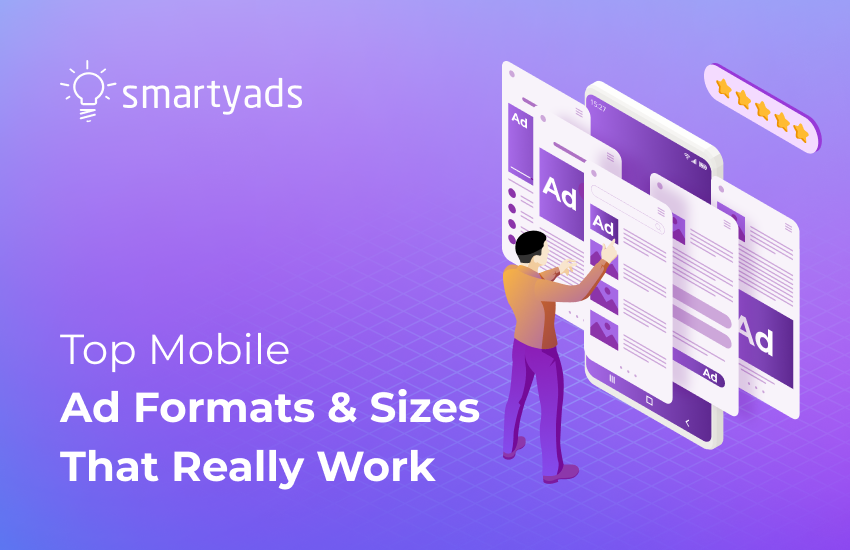If you're unsure about the distinction between programmatic buying and real time bidding (RTB), you're not alone. While these terms may seem similar, there's a clear difference. Not all programmatic advertising involves real-time bidding. Programmatic advertising can be complex, with unfamiliar jargon and obscure ad formats. In this article, we aim to clarify real-time bidding, media buying, and programmatic advertising. If you're struggling to differentiate between these terms, this article is for you.

What is Programmatic Media Buying?
By definition, programmatic is an ad network that is automated and running according to a program, algorithm, or schedule.
Media buyers are thus responsible for defining brand programmatic advertising campaigns, managing budgets, negotiating with publishers, and optimizing advertising for maximum profit.
Today, media buying is performed according to two methodologies:
- Through programmatic direct purchase: the publisher and the advertiser agree, and the latter buys ad spaces from the first one.
- Through Programmatic Buying, i.e. using an automated process of buying and selling ad spaces, the purpose of which is to show advertisements for the users in which they may be interested.
When applied to digital advertising, programmatic buying is just a buying method accomplished via machine technology to enhance and optimize ad buying and ad spend on an ad exchange.
Programmatic media buying is the data-driven process of purchasing digital ad space at a large scale with the help of automated software based on complex algorithms.
Programmatic ad campaign allows hyper-personalized targeting with agile messaging across all paid advertising. It replaces the manual process of media buying with automated solutions, therefore eliminating the risks associated with human error.
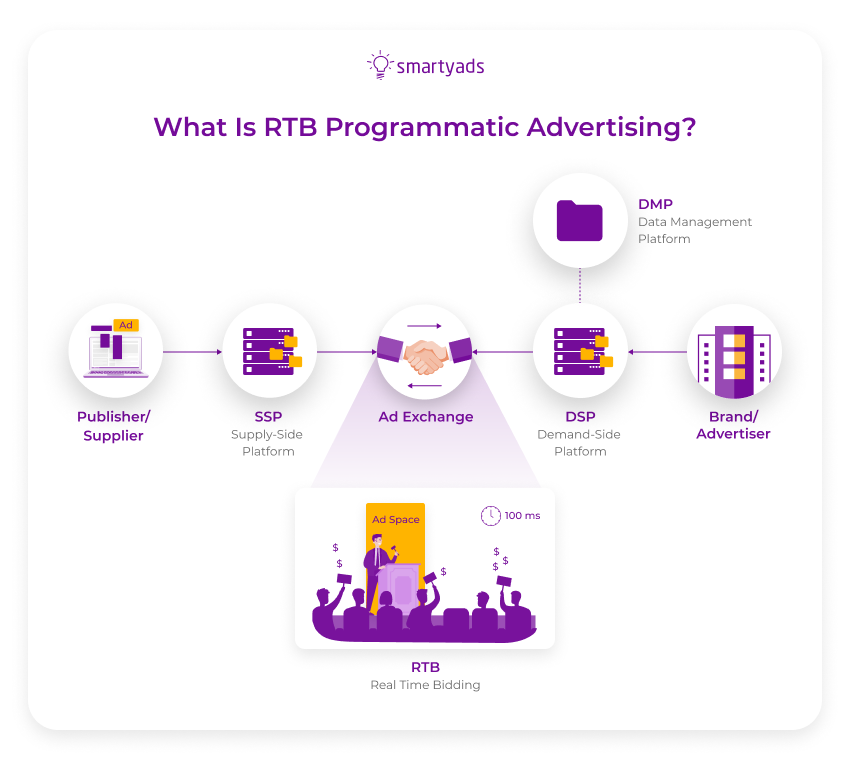

What are the Main Features of Programmatic Buying?
Artificial intelligence (AI)
The beauty of programmatic buying is in the use of artificial intelligence (AI) technologies such as machine learning and deep learning.
Machine learning uses algorithms to inspect data, learn from it, and make a prediction or a judgment over it, such as foreseeing the success of a given online advertising campaign or estimating ROI or user engagement.
The machine learns and evolves over time, enhancing the performance of the campaign and reacting instantly to ever-changing market dynamics. The AI algorithms find trends in individual consumers and adjust their programmatic advertising and online experience accordingly.
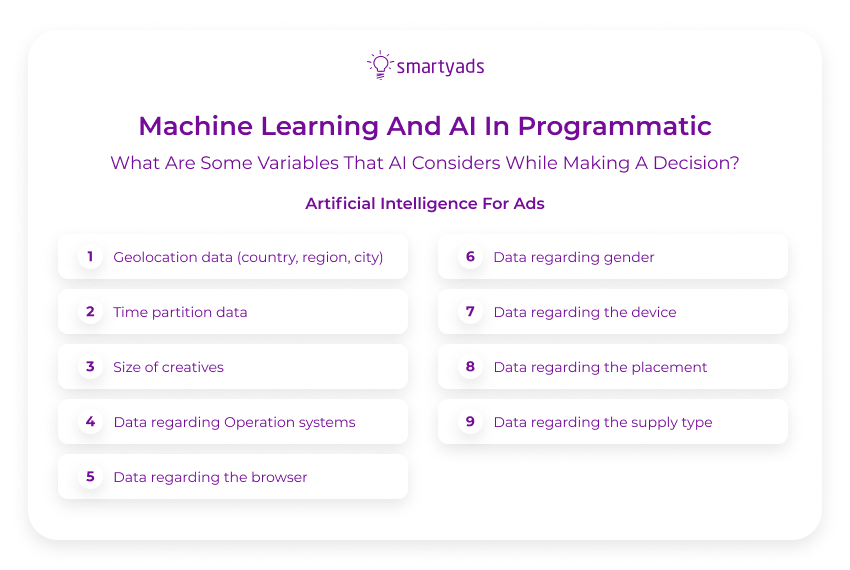
Deep learning
With deep learning, computers will learn from mistakes, monitor everything, and uncover insights we might not see. This technology will lead to more precise online profiles by predicting behaviors based on real interactions. Programmatic buying becomes a game-changer, offering rich data and insights. Advertisers get to see how well their ads perform, including the best-performing age groups and the most effective times to advertise.
Hence, advertisers can constantly adjust their targeting strategy and ensure consistent ad delivery. Besides, there is an article about things you need to know about programmatic buying.
Basic and advanced targeting
Basic Targeting
Basic targeting includes the simplest and most common settings used when creating campaigns. It offers customization by basic characteristics such as GEO (country, region, state, etc.), format, banner size, or categories related to your traffic.
Typically, basic targeting allows you to choose your traffic category, ad format, and country which you want to buy traffic from.
Precise targeting
Another unique technology offered by programmatic media buying is precise targeting. Your target audience is now available based on certain metrics obtained through algorithms.
Compared to the Mad Man era when advertising was more about creativity with little understanding of the consumers, now it is more about placing the ad in the right context to the right people regardless of the ad placement.
Pulling the information about potential customers from first- and third-party data, advertisers can serve their ads to a specific audience segment on any website. Such targeting options as gender, age group, location, household income, and relationship status allow a hyper-personalized RTB marketing approach.
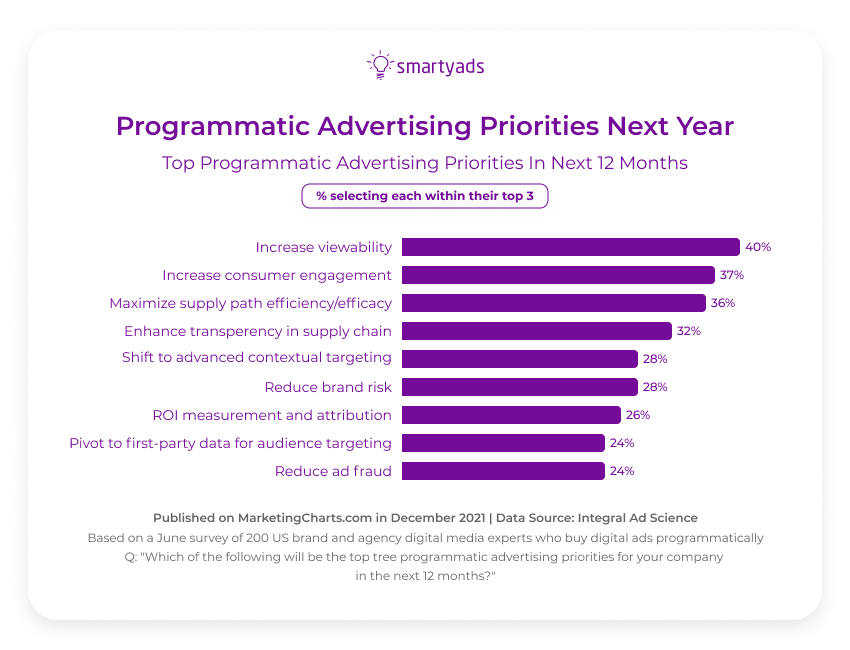
What is Real-time Bidding (RTB)?
Real-time bidding (RTB)
It is a form of programmatic buying (What is RTB?). Many people tend to think that RTB is the only way to buy media programmatically; however, that is not true. Although real-time bidding accounts for more than 90% of all programmatic buying, not all advertisers use real-time auctions for purchasing.
Private Marketplace
Private Marketplace (programmatic guaranteed), or PMP for short, is a variation of the RTB model, available by invitation only. It is an auction process in which multiple advertisers bid against each other to buy publisher resources.
Programmatic direct deals: the safest ad space
Alternatively, advertisers may use programmatic direct, which is a more traditional form of buying ad space using programmatic technology and does not involve real-time bidding at all.
In programmatic direct, digital ad inventory is sold directly to advertisers without bidding but with some prior negotiation with a publisher.
Therefore, programmatic direct methodology vastly surpasses the limitations of RTB. Real-time bidding can be seen as a subset of programmatic, a piece of a much bigger puzzle.
How Does Real Time bidding (RTB) Work?
Real-Time Bidding (RTB) is an automated system that enables the buying and selling of ad space in real time. Here’s a breakdown of the process:
User Accesses a Website: When a user lands on a website or opens an app with available ad slots, an opportunity to display an ad is created.
Auction Initiates: This ad impression is sent to an ad exchange, which triggers an auction. Advertisers connected to demand-side platforms (DSPs) are notified and can bid on the impression. The bid value depends on data like the user’s browsing habits, location, or demographic information.
Bidding Process: Advertisers quickly decide how much to bid based on the perceived value of showing an ad to this specific user. Bidding occurs automatically in real time.
Highest Bid Wins: The ad impression goes to the advertiser with the highest bid. Their ad is selected and ready to display on the website or app.
Ad Display: After the auction, the winning advertiser’s ad is shown to the user instantly, in the available space, ensuring relevance and increasing the likelihood of user engagement.
RTB helps advertisers reach highly targeted audiences, maximizing efficiency and improving the return on advertising investments.
Why is Real Time Bidding Important?
In this digital marketplace, ad impressions are instantly traded through programmatic means, with RTB meaning in advertising that real-time bidding is central to the process. The exchange happens in milliseconds, as a webpage loads. The distinction between programmatic vs. RTB highlights that while all RTB is programmatic, not all programmatic involves RTB. This setup offers marketers targeted efficiency and enables publishers to optimize ad space value and pricing strategies.
Key components of the RTB ecosystem include:
- Demand-Side Platform (DSP): A system enabling buyers to manage and purchase digital ad inventory across various networks and data exchanges from a single interface.
- Supply-Side Platform (SSP): A tool for publishers to price and manage their ad inventory, often referred to as yield optimizers.
- Ad Exchanges: A virtual marketplace connecting publishers who sell ad spaces with advertisers bidding for them. The highest bid wins, and the ad is displayed.
- Ad Networks: Organizations that aggregate ad space from various publishers, categorize it, and resell it to advertisers in bulk.
- Agency Trading Desks (ATD): Media buyers that manage programmatic media purchases, functioning as independent units.
- Ad Verification and Brand Safety Platforms: Systems that ensure ads are served to appropriate audiences, verifying media placements and protecting brand integrity.
This streamlined approach allows advertisers to target the right users while publishers optimize the value of their inventory.
Programmatic Buying vs RTB: What Are the Differences?
Real-time bidding (RTB) and programmatic buying are both automated methods for purchasing digital ads, yet they differ in scope and execution. Although RTB is a subset of programmatic advertising, not all programmatic buying involves RTB. Here's a breakdown of the key differences between real time bidding vs programmatic buying:
| Feature | Programmatic Buying | Real-Time Bidding (RTB) |
| Definition | Automated buying of digital ads across various platforms. | A specific type of programmatic that involves live auctions for individual ad impressions. |
| Process | Can include both direct deals and auctions. | Focuses only on real-time auctions for available impressions. |
| Speed | Automated but may involve negotiation or fixed pricing. | Takes place in milliseconds, auction-based and instantaneous. |
| Type of Ads Purchased | Includes all types: direct buys, private deals, RTB auctions. | Only auction-based ads are purchased. |
| Targeting | Programmatic allows broader targeting options, including predefined audiences. | RTB targets users on a per-impression basis for more precise targeting. |
| Control | More control for advertisers with options for private marketplace deals and reserved impressions. | Less direct control, as ads are placed based on highest bid. |
| Flexibility | Offers a mix of strategies including fixed-price and auction models. | Fully auction-based with dynamic pricing. |
In summary, when comparing programmatic vs real-time bidding, it's clear that programmatic buying is a broad, automated system encompassing various buying methods, while RTB specifically refers to real-time auctions of individual ad impressions.
Bottom line
RTB represents a specific aspect of a broader technology known as programmatic and RTB advertising. To grasp the concept, think of a lemon. Lemons are known for their sour taste. This sourness is a defining feature of lemons. However, it’s essential to recognize that not everything with a sour taste is a lemon, right? Similarly, programmatic and RTB are closely related, but while RTB is a component of programmatic advertising, not all RTB/programmatic advertising strategies are the same.
Discover exceptional RTB opportunities with SmartyAds. Reach out to us now for more information!

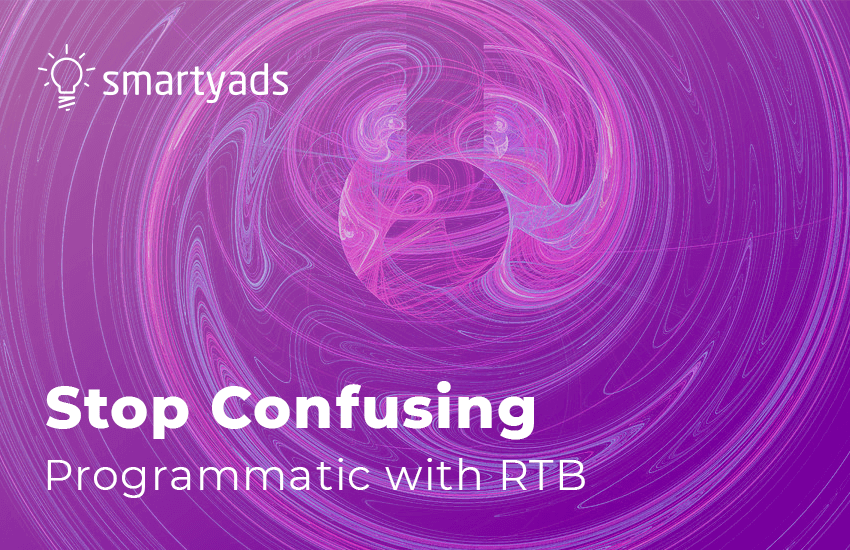
.webp)


